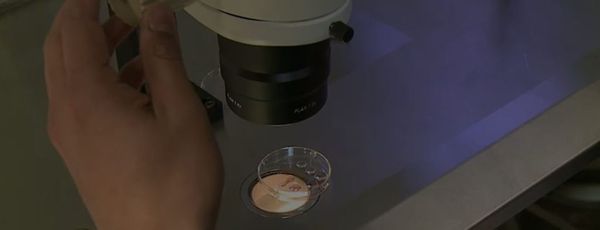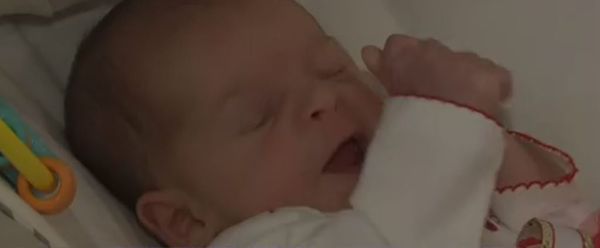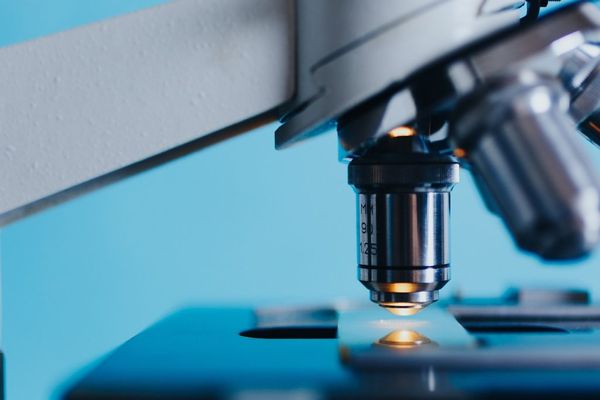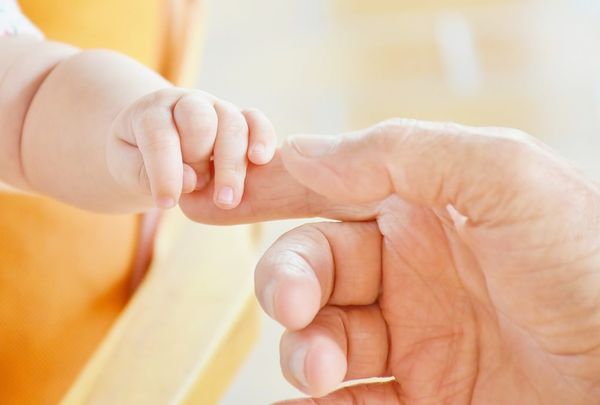
Modern medicine has come a long way in helping families struggling with infertility. One remarkable example is the story of Tina Gibson, a woman from Tennessee, who gave birth to a baby girl named Emma Wren Gibson. What makes this case extraordinary is that Emma was born from a frozen embryo that was donated in 1992, just one year after Tina herself was born.

Tina and her husband Benjamin had been married for over 5 years but were unable to conceive naturally due to Benjamin’s cystic fibrosis. They had accepted the idea of adoption and became foster parents. However, everything changed when Tina’s father introduced them to the possibility of using a frozen embryo to have a baby.
Initially hesitant, Tina couldn’t stop thinking about it. When she shared her thoughts with Benjamin, he revealed that he had been considering the same option. They decided to research and explore the idea further. After thorough consideration, they submitted an application for embryo adoption and were approved.

The process of adopting a frozen embryo is similar to traditional adoption. The couple had to go through a home study to ensure a suitable environment for the baby. Once approved, they were given a list of potential frozen embryos with detailed information about their medical history and achievements.
It wasn’t an easy decision for them to make. They had to go through 300 profiles in just two weeks before finally choosing the embryo that would become their daughter, Emma Wren Gibson. While it is presumed that the embryo was donated in 1992, there is no way to know for sure.

The procedure was performed by the National Embryo Donation Center in Knoxville. Although the center was not involved in the Gibson case, they are familiar with similar practices. According to Dr. Zaher Merhi, an expert in IVF research and development, it is impossible to identify the oldest known embryo. American companies are not required to report the age of an embryo used, so records of such information are unavailable.
When Emma Wren Gibson was born, Benjamin’s joy was immeasurable, despite not sharing a genetic connection with his daughter. Tina was equally thrilled and expressed her gratitude for their precious Christmas gift from the Lord. They consider themselves blessed and are open to the possibility of still adopting in the future.

The National Embryo Donation Center, a faith-based organization, is dedicated to protecting the sanctity and dignity of human embryos. Embryo donation and adoption are advocated for, and they work closely with fertility clinics to facilitate the process. The fees for adopting a frozen embryo are typically around $12,500.

While using a frozen embryo is one alternative to parenthood, there are other options as well. Becoming a foster parent is a valuable opportunity to provide a loving and supportive environment for children in need. The government also offers financial assistance to alleviate some of the expenses associated with caring for a child.

Surrogacy is another viable option for couples struggling with fertility. It involves selecting a woman to carry and deliver the baby on behalf of the intended parents. Additionally, adoption opens the doors to brightening a child’s life and making a positive impact on the world. There are thousands of children in the U.S. and millions worldwide who are waiting for a better quality of life.

In the end, no matter the road taken, the desire to create a family and provide a nurturing environment is what truly matters. With the advancements in modern medicine, there are more options available than ever before, giving hope to couples like Tina and Benjamin, and the opportunity to experience the joys of parenthood.
